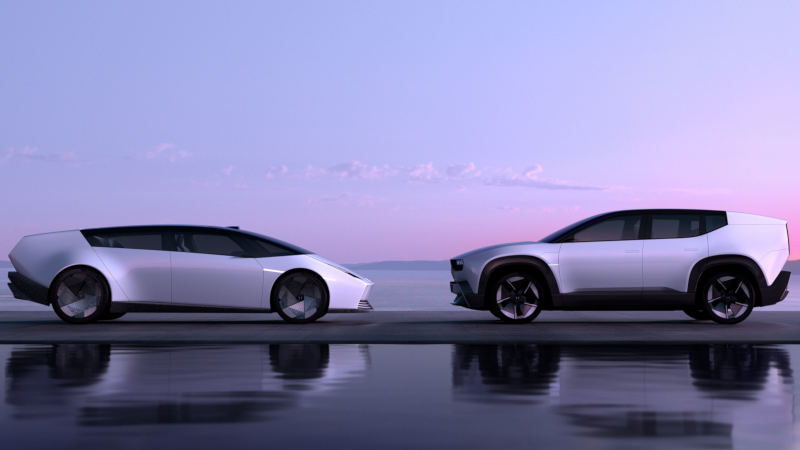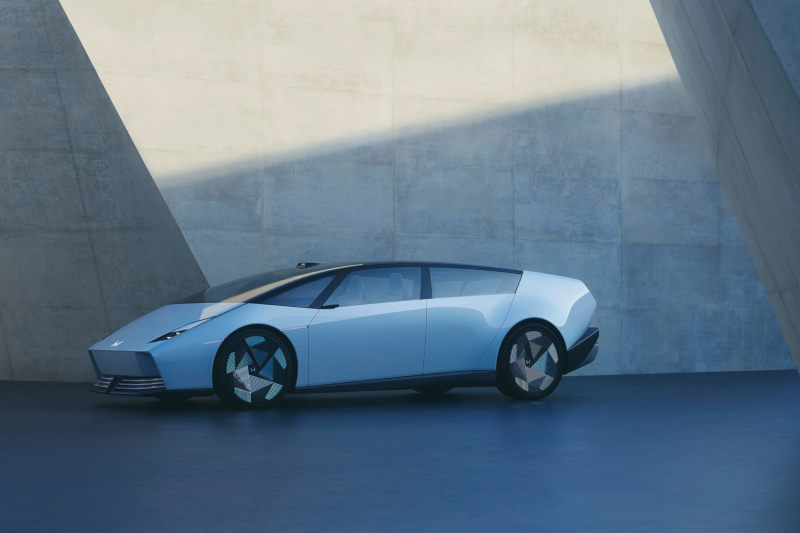Honda introduced futuristic Zero electric cars with a “wise” OS that will learn from the driver


Honda presented two prototypes of the Honda Zero series electric vehicles at CES 2025 in Las Vegas. The first is an SUV based on last year’s Space-Hub concept, called the Honda 0 SUV; the second is a sedan based on the Saloon concept car, now called the Honda 0 Saloon. The machines run the Asimo OS software platform.


Image source: honda.com
Serial production of new electric vehicles will begin in 2026. These two models will be the first to run Honda’s new Asimo OS. The SUV seems to be not only a more practical solution, but also a prototype closer to the mass version. It boasts a unique cargo opening and fold-down tables on both sides.


Honda 0 Saloon is more reminiscent of last year’s concept, although the manufacturer made it closer to reality by replacing the gullwing doors with regular ones. When the sedan’s doors open, the extended steering wheel rotates to allow the driver to sit comfortably in the low seat without getting caught. In an SUV, this function is absent as unnecessary.
From the concepts, the prototypes received a dashboard screen that stretched from pillar to pillar. However, doubts remain that it will remain in production versions. Company representatives said that the Honda Zero series embodies three principles: “thinness, lightness and wisdom.” At CES 2025, Honda decided to show the “wise” side of the series.
This “wisdom” includes, for example, the Asimo OS operating system, named after the humanoid robot created by the company in the early 2000s. The system will offer the driver “ultra-personal optimization”, Level 3 autopilot functions with the ability to take your eyes off the road under certain conditions, as well as control of electronic control units (ECUs) such as suspension, braking and steering. Autopilot will have an “affordable” price, Honda promised.
Asimo OS will “learn” from the actions of the car owner and adapt to it. The manufacturer has committed to releasing regular updates. Renesas was involved in the project, which developed a system on a chip that allows reducing the number of ECUs and processing large amounts of data.
The remaining units will handle everything from driver assistance systems and transmission control to comfort-related functions. This is in line with the current trend of developing “software-defined cars” in light of the widespread adoption of AI and autopilot systems.
Recent Posts
TikTok to Shut Down Its Instagram Clone on May 8
Chinese short-video service TikTok is set to shut down its TikTok Notes section on May…
Meta Loses Head of Fundamental AI Research
Meta✴'s VP of AI research Joelle Pineau has announced her departure from the company. Her…
Meta to Release Smart Glasses with Display and Price Tag Over $1000 by End of Year
Meta✴ is preparing a more expensive version of smart glasses as part of a joint…
China Allows EHang Electric Jets to Transport People by Air, but Air Taxi Services Still Banned
On March 28, 2025, Guangdong EHang General Aviation and its two partner air transport operators…
- Mobile phones, smartphones, cellular communications, communicators, PDAs
- Technology and IT market. news
Poco F7 Ultra and Poco F7 Pro are smartphones with powerful chips, advanced camera systems and high reliability
Xiaomi recently launched the Poco F7 Ultra and Poco F7 Pro smartphones, which feature high-performance…
A World in a Box of Locusts and Single-Player Co-op: Details on Disco Elysium’s Cancelled Kuno and Kunu Spin-Off
An internal presentation of Project X7, a cancelled ZA/UM spin-off of Disco Elysium led by…